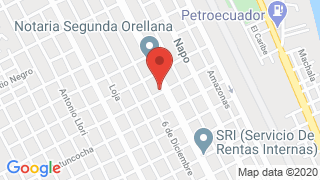Orellana Province


Orellana is a province with a lot of tradition and natural attractions, among them we have the well-known Yasuni Park, which is already known as “a song to the life of the country and the world”. An equatorial jungle area of lush greenery and particular fauna and flora.
The Napo River is one of the most transcendental in the Amazon region and Ecuador; many native communities are established on its banks and on those of its two main tributaries: the Coca River and the Aguarico River. A unique ecosystem in the world.
History
Founded date: July 28, 1998
The history of this province is closely linked to that of all the sister provinces of eastern Ecuador and for several centuries, as well as the entire territory was in neglect even with the arrival of settlers in their areas, and during the oil boom of the 70s , the rest of the territory would only see interest in demographic expansion. Contrary to the case of the Yasuni National Park, which has become the largest protected area in continental Ecuador, it protects an impressive biodiversity in the heart of the Amazon rainforest and safeguards part of the Waorani nationality territory. In the Yasuni, amazing biodiversity figures have been reached for various groups of flora and fauna.
Here we find hundreds of tree species, large rivers that overflow with stormy rains and large animals such as the jaguar, anaconda and harpy eagle.
Places to discover
- Taracoa Lagoon: Unique lagoon for the environment, landscape and biological, its water is pure and crystalline; on this site you can easily enjoy the song of birds.
- Napo River: It is an extensive river that transits the Amazonian territories of Ecuador and Peru. This river is navigable and allows boat trips where nature reveals its grandeur.
- La Belleza (Beauty) Waterfall: It has a natural landscape, and a waterfall that amazes its own people and tourists.
- CICAME Museum: it is an archaeological and ethnographic museum that allows visitors to appreciate the history and tradition of the area.
- Añango Lagoon: Always accompanying the town of the same name is one of the estates that guard unique species of the region. From the Quichua community of Añango there is a road that leads to the lagoon.
- Laguna del Carmen: The lagoon is located at Km. 21 via Auca-El Carmen Community, El Dorado Parish has about 200 m. of extension. In the lagoon resides great set of wild fauna, herons, hoazines, cormorants, fish, alligators, among others.
- Archaeological Museum Cultural Center Orellana: This Cultural Center recognizes and explains the territory historical memory. It allows us to reason the present knowing the past.
- Yasuni National Park: The Tagaeri and Taromenane, Indigenous Peoples in Voluntary Isolation live internally. To protect them and all the wildlife that the Yasuni houses, the Tagaeri-Taromenane Intangible Zone was achieved in 1999. Yasuni National Park, the Intangible Zone and the adjacent Waorani territory received the declaration of Biosphere Reserve by UNESCO in 1989.
Weather
Orellana is characterized by having a tropical climate. There is always a lot of rain in Orellana, it rains even in the driest season. The average temperature in the year within the province almost always borders 27 ° C.
Gastronomy
There are a number of typical dishes of the Amazonian territory which have passed from generation to generation trying not to lose them, and always looking to maintain the original preparation of these foods through natural cultivation:
- Fish Maito: It is a fish-based food seasoned with salt, garlic and pepper, wrapped and well tied in bijaos or banana leaves. The fish preparation is put on grill and eaten with cassava, banana and salad.
- Chicha de Yuca: Ancestral nutritious drink of the indigenous nationalities, prepared with cassava pulp or fermented chonta.
- Chontacuro: It is much sought after because of its distinct flavor and the nutritional contribution it offers. It is known about some healing properties, especially for the stomach and is served in several ways, grilled, fried on skewers or maitos.
Culture and customs
Many Kichwas communities retain several of the ancient rites and are very respectful of their dead. In our country, the tradition of the indigenous people on the day of the dead is reluctant to disappear. Food altars are usually raised where prayers are not lacking in respect and memory to those who departed, they are still celebrated in many communities in the province.
The Kichwa community tries that their customs and traditions do not disappear, the day in commemoration of the deceased, one of the main rituals is the cleaning of the graves, throughout the day they meet in the family and when the day comes they return to the Tomb of loved ones and cry as if it were a second grave.
The community women are the ones who cry the most and among their sadness they tell the epic story of the deceased, how he or she was, and what he or she was doing in life. If he was a boy, his exploits were narrated as a good hunter or in the case of the family’s women as good dancers, it is said that before the tradition sent to reap the fruits that the deceased liked most, also the dishes that he liked the most and they offered them.
The sectional entities have also promoted the musical wealth and the generational fusion of the peoples and nationalities, in this area we can highlight the group “Tropical Amazon” is a musical group of Loreto canton, it has 11 members and received musical instruments through the project of strengthening of indigenous music that was carried out by the Coordination of Nationalities of the Provincial Government of Orellana

Publicado en:
Publicado por:



